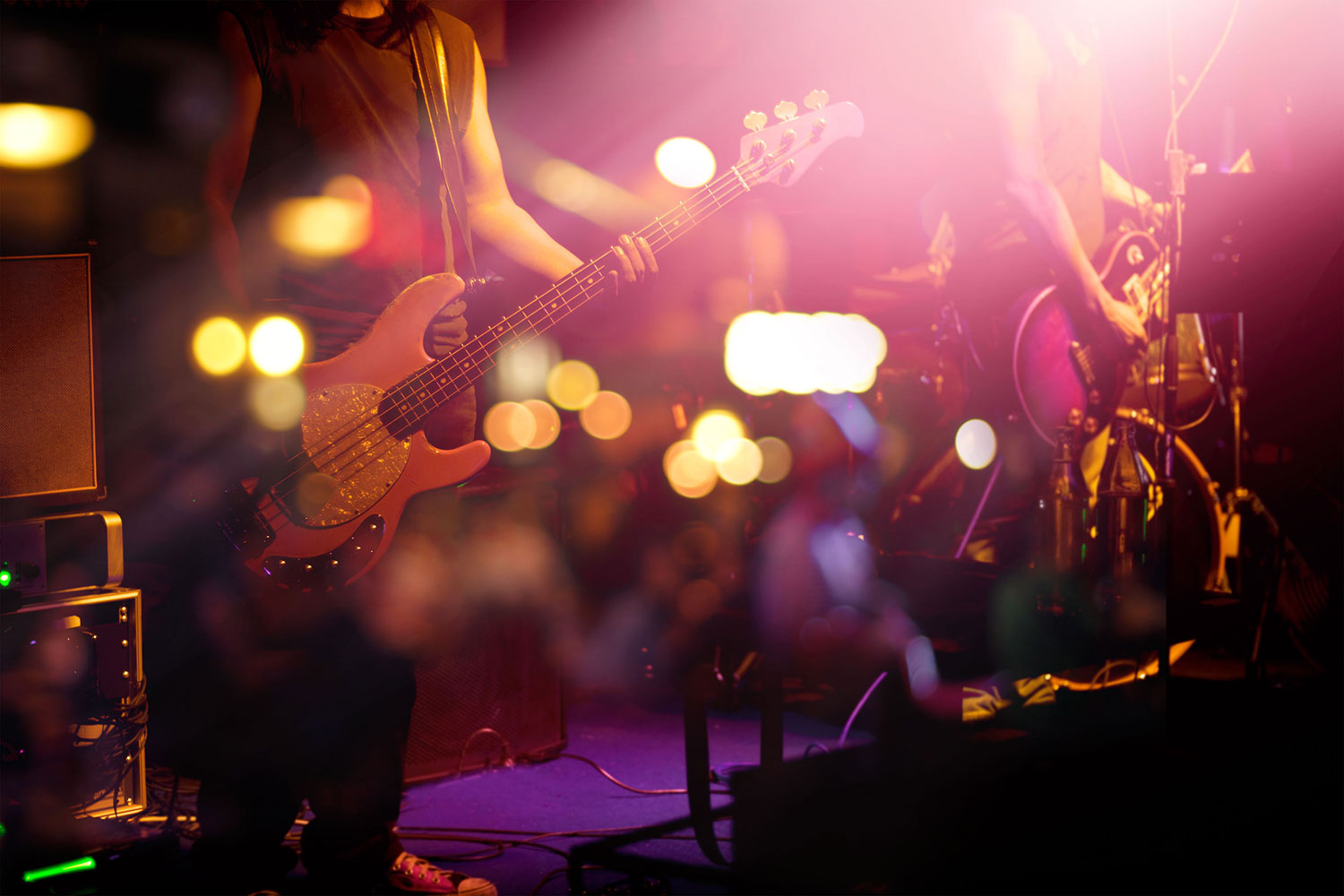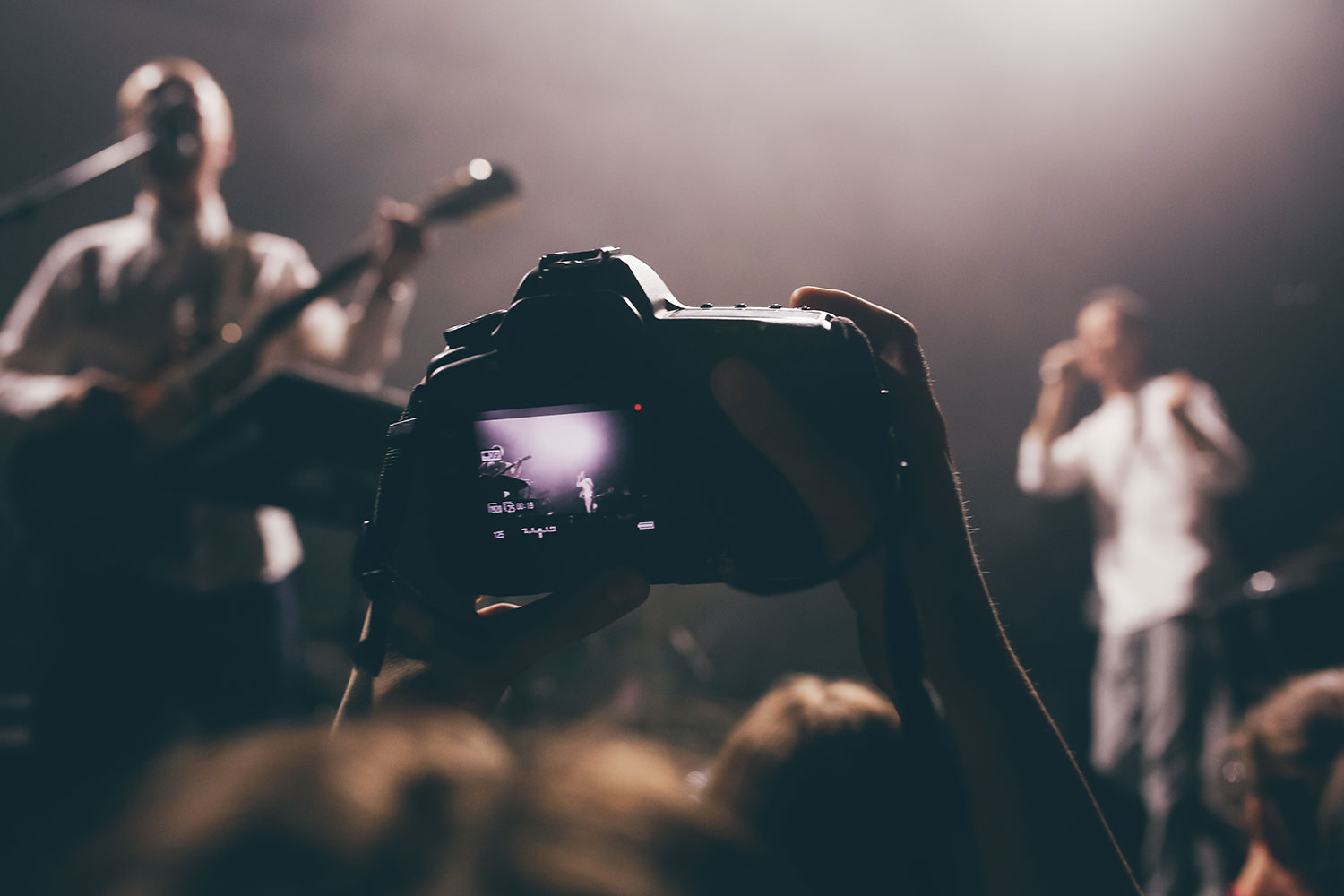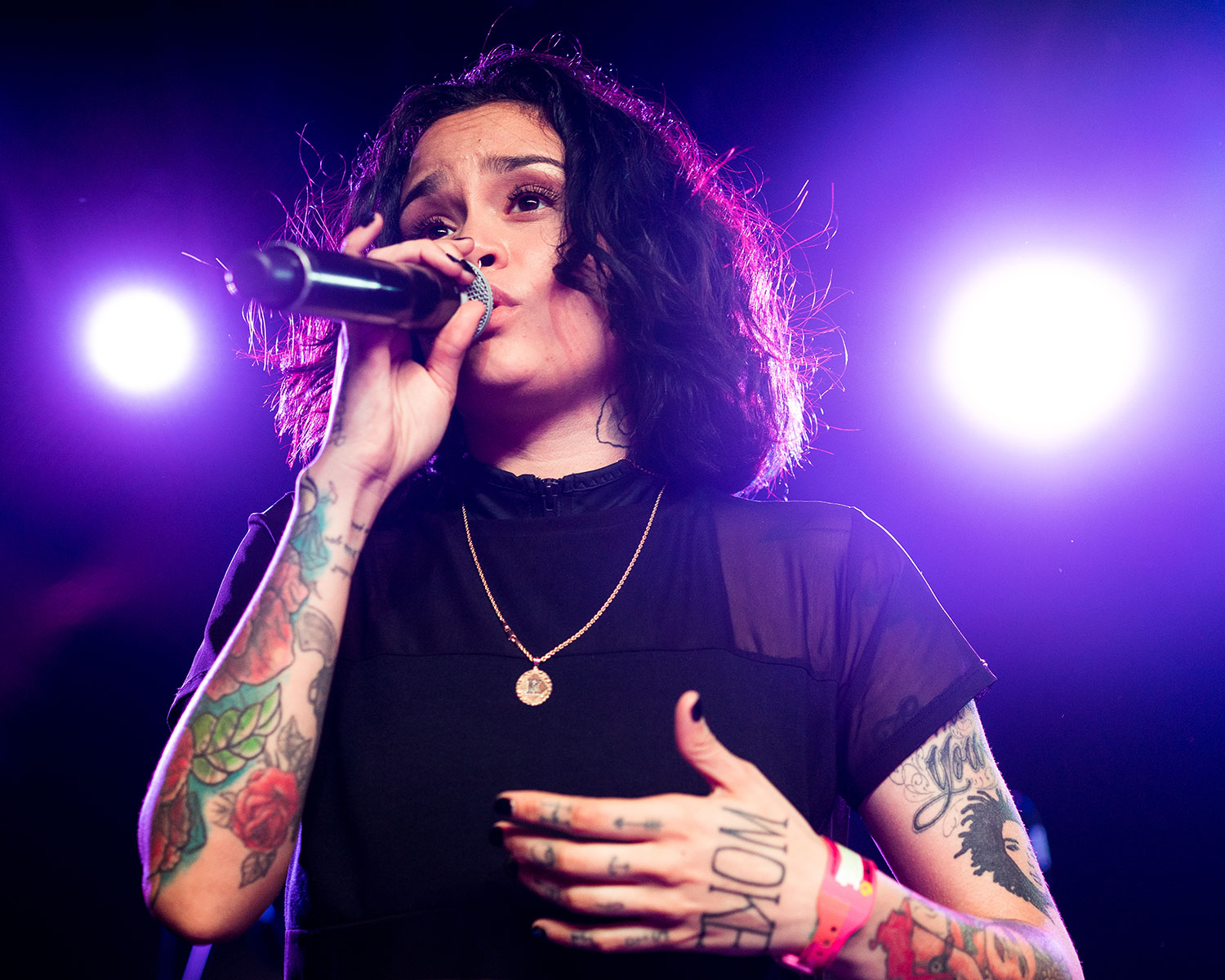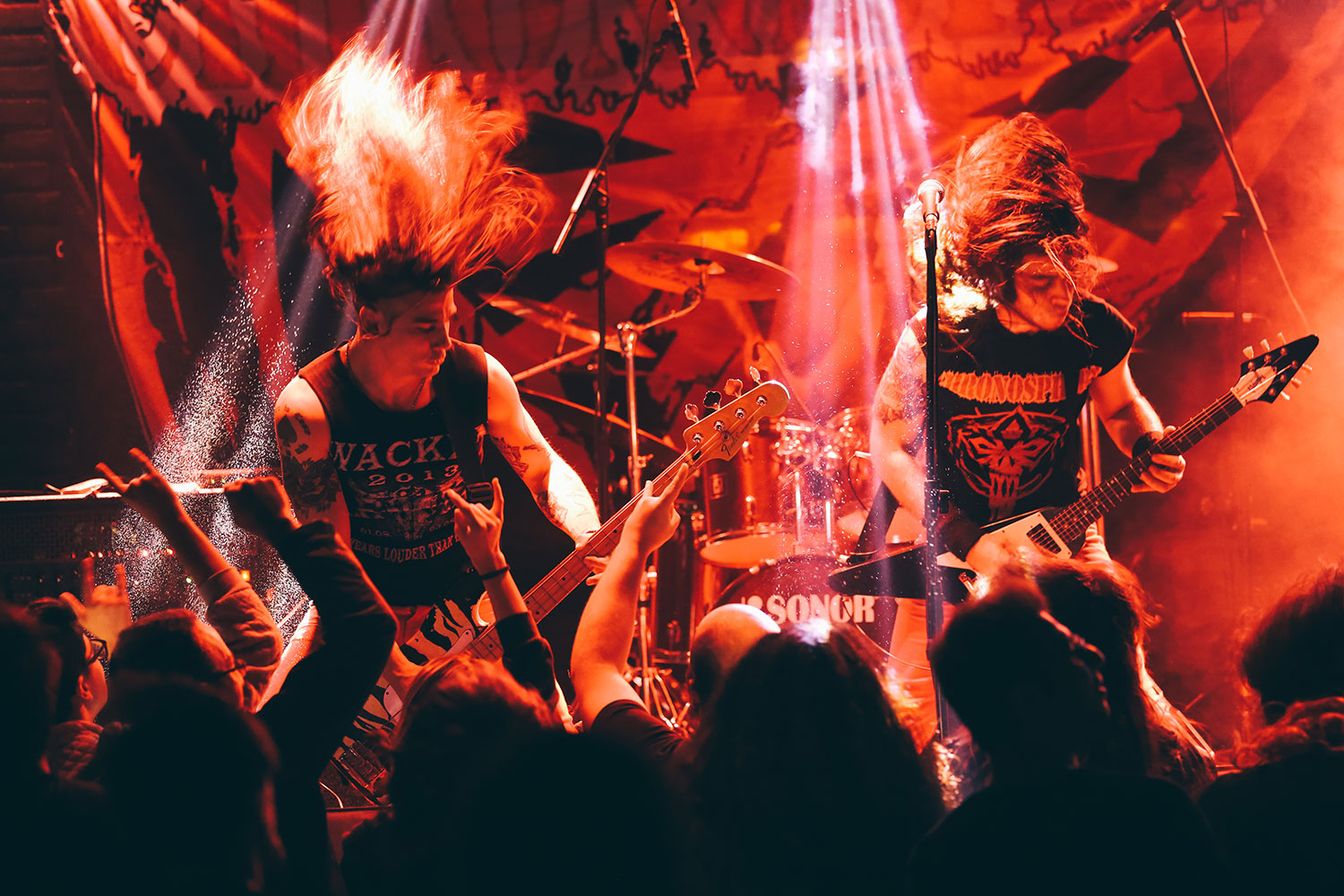
Event and stage photography
How to take impressive shots
A dark hall, impressive lighting effects, spotlights and plenty of backlighting – Photographing at concerts, shows and similar events is a real challenge even for experienced photographers. The light conditions are not only difficult but also change constantly. In addition, the artists on the stage are usually in motion and this requires good timing and finesse of the photographer.
We have compiled the most important tips for you that you should consider for successful stage photos.
Use light-intense equipment
The lack of light in the concert hall, exhibition hall, etc. requires a more light-intense camera technology. Both the camera and the lens need to be the right one for photographing in places that have little light
Strictly speaking, however, you should inform yourself in advance with the event organizer if and which camera equipment is allowed. As a general rule, only accredited photographers are allowed to bring their equipment to the event, especially at major events. The public sometimes tolerates compact cameras and smartphones for souvenir photos, but to be on the safe side, you should ask about this in advance.
The right camera
In the matter of light intensity, cameras with full-format sensors are best. Its advantage in size over other sensors means that it can absorb more light and requires less adaptation due to the ISO value. As a result, the risk of image noise from very high ISO values when using a full-frame camera is much lower than for other models.

Nevertheless, other cameras from the upper price segment also score high thanks to their high-performance technology with largely noise-free results despite high ISO values. In addition, high-quality camera models have a fast autofocus which facilitates the capture of snapshots in changing light and moving subjects.
Cameras that have a maximum setting range of 400 or 800 ISO value are not recommended for event photography, as the results are likely to become too dark and will have poor quality due to image noise.
Suitable lenses
Besides the camera, the lens used plays a decisive role in expressive stage photography. Depending on the event, it is often not possible, or possible only a few times, to change the lens in between. Light-intense zoom lenses are best suited for displaying both the entire stage and individual artists.
The required focal length depends, among other things, on the location or position from which you photographically monitor the event. If you can stand directly between the stage and the audience (in a trench), we recommend to use a focal length between 24 to 70 mm. If you take pictures at a greater distance from the stage, for example at the mixing console, a lens with a focal length between 200 to 400 mm is required. The bigger the site of the event, the higher the focal length should be in order to get successful results.
Due to its special light intensity, a fixed focal length would also be a good choice. Compared to a zoom lens, the aperture can be opened much wider here, up to an aperture value of f/1.2. In this way, more light gets to the sensor in combination with a short exposure time, and moving subjects can be frozen sharply. In addition, fixed focal lengths have a design that is optimized to a focal length and thus provide a very good picture quality and sharpness of the photos. If you use such a lens to be able to take details or portraits instead of only long shots, we recommend a fixed focal length of 85 mm, which corresponds to a light telephoto lens.
Flashlight for stage photos
Basically, the use of flash in event photography is rather recommended for experienced photographers. In addition, the photo flash is not desired at many events. For smaller events in a manageable location, however, the targeted use of flash light can help capture more ambient light and improve the result. In any case, you should ask the artists or the event organizer in advance if photographing with flash is alright for them.
Since the installation of comprehensive photo light technology is not possible on most events, it is better to use a detachable flash unit with a diffuser. It is important that you do not direct the flash directly at the subject, as this produces hard drop shadows, especially at close range. It is better to use the flash for a subtle lightening of the subject. This is best done by flashing vertically. In this way, there will still be enough light to brighten up the subject which counteracts the backlight of the stage spotlights without completely changing the overall atmosphere in the picture.
Useful accessories
For event and stage photography, the lens hood must not be missing. It reduces unwanted lens reflections that can be caused by light entering the picture from the front or from the sides. In this way, despite constantly changing light effects from different directions, the picture quality can still be improved.
Depending on how big the event is, you should be careful not to leave your equipment on the floor. Besides the risk of damage to your equipment, visitors or personnel and security personnel may also trip over it. It is therefore best to store everything in a shoulder bag or a backpack that you can carry on your body at any time. Even better are special carrying systems – especially if you want to use multiple lenses. For example, you can put lenses and accessories in special belts so that they are always ready at hand.
Tip
Always have a pair of earplugs ready as you will occasionally take pictures within close proximity to speakers. The enormous volume not only affects your concentration when you’re taking pictures, but can also be harmful to your health.
Picture design in stage photography
Depending on the event, there are different options for motives – sometimes more and sometimes less multifaceted. Basically, the closer you get to the stage or the artists, the better. Without disturbing the performance, you can try different perspectives and camera settings.

Perspectives and motives
It is best to always photograph solo artists or individual members of the band slightly from the side. If you take front shots, the microphone may cover the entire mouth, and you will lose the artist’s emotional facial expressions and overall picture effect. Taking pictures of musicians with instruments from the side is better for capturing their facial expressions and body language.
If you want to get all the artists on stage on the picture, then a frontal shot is well suited. A frontal shot will better express, for example, the symmetry of a formation of artists than a lateral shot.
Of course there are other interesting motives in stage shows besides the artists themselves. Photos focusing on instruments or shots of the cheering audience are excellent in portraying the atmosphere of the event. When photographing the audience, make sure not to have the focus of anyone in the picture without their consent in order to preserve their right to their own image.
Using depth of field
If you photograph a solo artist, the focus should be on him or her. Exciting backgrounds are only distracting. To sharply highlight the artist or a particular band member in the picture, you can magnify the aperture. In addition, however, the distance from the subject and the focal length play a role. The greater the distance, the greater the depth of field, and the farther the focal length, the lower the depth of field in the picture.
However, the aperture is the main factor in regulating the depth of field. A wide open aperture corresponds to a small f-number. The smaller the f-number (for example, f/2), the sharper the foreground will be displayed. In this way, you can make the background behind the sharply depicted artist disappear in blur.
For stage shows that have many and fast movements, the main thing is to capture the dynamics in the picture. In conjunction with short exposure times of about 1/125 and 1/200 seconds, the small f-numbers are also used here. This allows you to freeze the moving subject while the surrounding is in blur. Here, the automatic aperture control can be of great help. It is usually marked with T, S or Tv on the camera’s mode dial and automatically adjusts the aperture and ISO value to the shutter speed that you had set.

Use of light effects
Make use the light effects of the event with the aid of the background blur, which is also known as the Bokeh effect. The different colour plays and the varying light intensities can provide for an extraordinary picture effect. By varying the aperture value and shutter speed you can play with the sharp and blurred levels in the picture and make specific use of, for example, the so-called lens flare for the picture design.
The bright light spots in the picture are created by the front or side incident light of the stage spotlights in the lens. The more blurred the background is photographed with the help of a wide open aperture, the more clearly the lens flares are displayed. To increase the effect of the lens flare even more, an extended exposure time can be used.
Too long an exposure time, however, causes motion blur in moving subjects. As mentioned in the accessories, a lens hood can reduce unwanted stray light effects, but still allows a specific Bokeh effect.
Gather experience at small events
With light-intense photo equipment, you can take impressive photos of concerts, plays and other stage shows, despite the exceptionally difficult lighting conditions. Select the camera, lenses and accessories for event photography in a targeted and economical way to be as mobile and flexible as possible.
Inquire in advance if photography is allowed at the event and if so, to which extent. While smaller bands usually are happy about good photos that enhance their prominence, at major events only accredited photographers are admitted. In addition, at such major events there are concrete time windows in which photographs may be taken.
As a beginner, it’s best to start with small events and establish contacts with regional bands and organizers. Here you usually have more freedom and can try different settings and perspectives in peace to develop a feeling for the existing lighting conditions at such events. However, always respect the right to one’s own picture and make clear arrangements with the artists or the event organizer on what you are allowed to photograph and for what purpose.
We wish you a lot of fun trying it!
